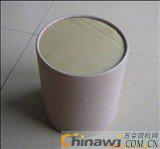Hollow glass butyl rubber is a one-component, solvent-free, non-fogging, non-vulcanizing, non-vulcanizable, first-class encapsulant for insulating glass based on polyisobutylene rubber. Hot-melt butyl sealant maintains its plasticity and tightness over a wide temperature range without cracking or hardening. Due to its extremely low water vapor transmission rate, it can be combined with an elastomeric sealant to form an excellent moisture resistant system. Features: good sealing effect, easy to guarantee quality; no need for curing period, saving floor space and reducing production cost; it is environmentally friendly, no waste, and clean environment.
Hollow glass butyl rubber is a must-have for the first sealing of insulating glass with two-component polyurethane sealant, two-component polysulfide sealant, two-component silicone sealant and hollow glass hot melt adhesive. According to the size of the insulating glass butyl rubber coating machine, different specifications of hollow glass butyl rubber are selected. When making hollow glass with hollow glass butyl rubber, pay attention to:
1. Clean the insulating glass and aluminum spacers for use.
2. Put the butyl hot-melt sealant into the extruder cylinder and preheat it to 130-140 °C. After the thermostat is kept at a constant temperature, when the strip is tested and the line is evenly continuous, the strip is applied to the hollow glass aluminum spacer. On the trough, after a little cool, it is pressed into a semi-finished hollow glass with clean glass.
3. After the outer sealant is applied and cured, it is the finished hollow glass.
4. When using the imported fast glue machine, the temperature of the rubber cylinder should be increased by 10-15 °C, and the extrusion pressure should be adjusted from 150Mpa to 170-200Mpa, and the rubber strip should be evenly distributed.
Note: When using butyl hot-melt sealant, keep your hands clean. Do not put dust, oil and solvents (such as acetone, gasoline, etc.) on the surface of the glue. Wear a lint-free glove when applying glue. Be careful to burn when in contact with hot glue. Gloves that come into contact with glue should be clean and free of burrs or other contaminants that tend to stick to the glue. When the butyl hot-melt sealant is glued, it should be controlled below 160 °C. It is strictly forbidden to glue at 170 °C or above to avoid aging and decomposition of the glue.

Carbon and its compounds A wide variety of carbons can also be alloyed with iron, the most common being carbon steel; graphite and clay can be used to make pencil cores for writing and painting, and graphite can also be used as a lubricant and pigment as a glass. Molding materials for electrodes and electroplating, electroforming, electric motor brushes, and neutron deceleration materials in nuclear reactors; coke can be used in barbecue, drawing materials and ironmaking industries; gem-quality diamonds can be used as jewelry, industrial Diamond is used for drilling, cutting and polishing, as well as tools for machining stones and metals.
Carbon Products,Carbon Block,Metallurgical Coke,Graphite Electrode
Ningxia Evergreen Trading Co., Ltd. , http://www.nxevergreen.com